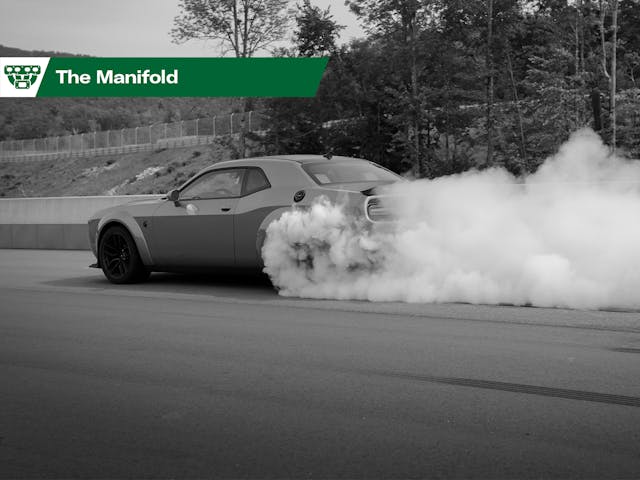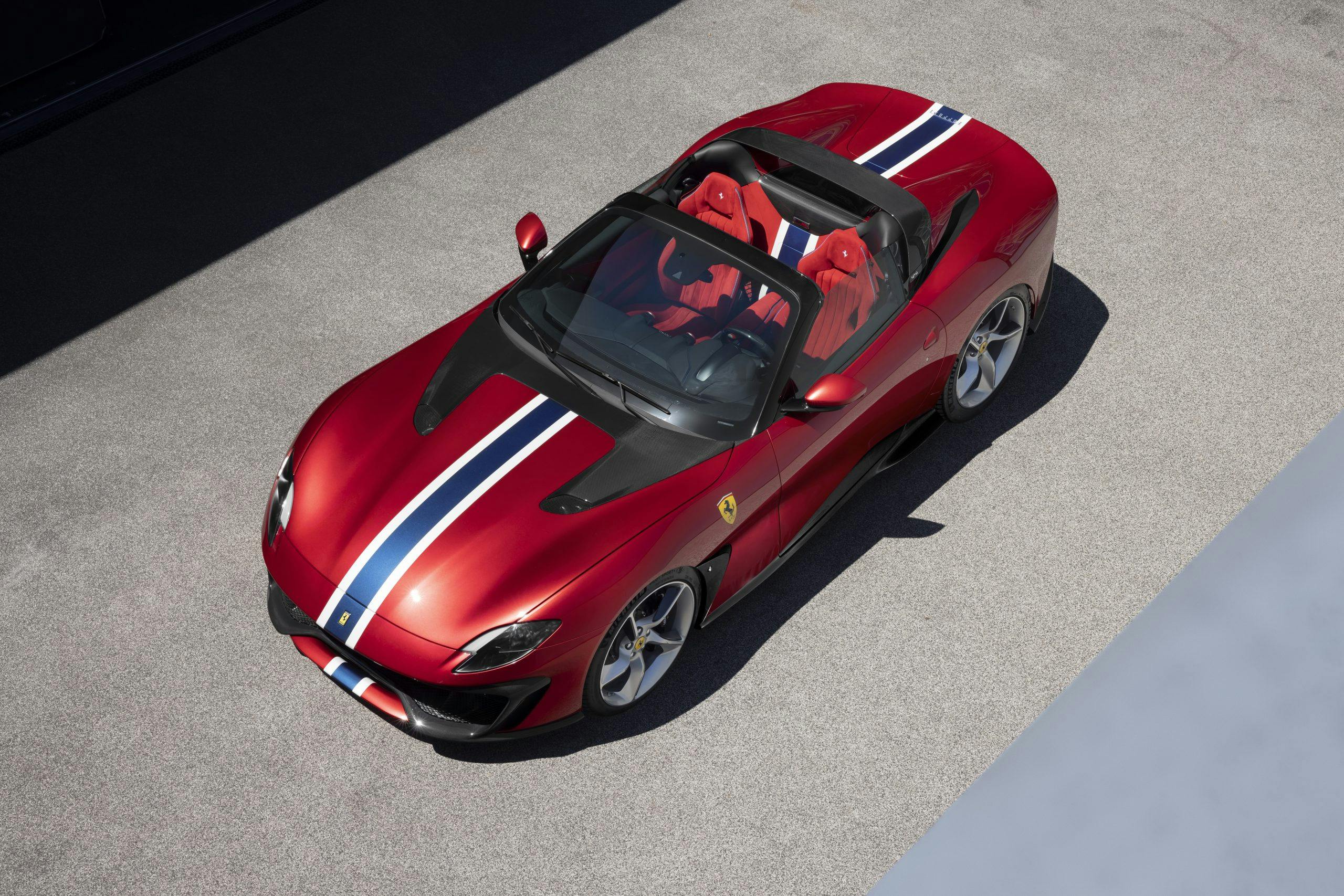Media | Articles
Hemi’s final send-off delayed, $5B in 5 years for U.S. EV chargers, ultimate open-air Ferrari
Supply issues delay Dodge’s final Hemi send-off
Intake: Yesterday, Dodge announced that the firm’s seventh—and final—“Last Call” special edition will have to wait as supply chain issues have reared their ugly heads yet again. Originally, this last “farewell” model had been slated to debut at SEMA in Las Vegas, this November. Now, Hemi-lovers will have to wait to see which new toy will join the six previously announced “Last Call” models. Earlier this month, Dodge introduced the series to celebrate the Challenger and Charger, which are ending a lengthy production run at the conclusion of 2023. So far, Dodge has given us the three Challengers—the Shakedown, Scat Pack Swinger, and Black Ghost—and three Chargers—the Super Bee, Scat Pack Swinger, and King Daytona. When “supply issues” have been resolved, a reveal of the final chapter will be rescheduled. Stay tuned.
Exhaust: It’s a shame we have to wait for more muscle-bound goodness from Dodge. Though, if the final special edition is anything like the first six, it will be worth the wait. We gleaned a couple details from a shot of fabric-draped car, present at the original announcement of the series. Given the silhouette of the silk, it appears as though the seventh “Last Call” vehicle will be a Challenger. We can also see that the license plate reads “1FAST29.” This could be two things. Perhaps, it is an illusion to the nine-second passes that stock Demons have been known to throw down. Editor Kyle Smith pointed out that it could also be in reference to Dodge’s long-standing 2.9-liter inline-six. Either way, we wait with bated breath. —Cameron Neveu
Lamborghini Urus S: Performante power, less drama

Intake: If you want excitement in your luxury SUV—but not quite that much excitement—allow Lamborghini to present the new Urus S, which has the same horsepower as the similarly new Performante, but dials back the excitement a bit. The S replaces the standard Urus model. The Urus S shares the same 657-hp twin-turbo V-8 with the Performante, but it delivers it in a slightly less dramatic fashion. The Urus, according to Lamborghini CEO Stephan Winkelmann, is “for those choosing the purest sublimation of performance, luxury, and versatility.”
Meanwhile, “The Urus Performante takes to the road as a lightweight, honed athlete. Its muscular stance, distinctive design, V-8 twin turbo powerplant and lightweight sports exhaust establish it through sight, sound, and experience as the most exciting contender on every road, track and loose surface. This is a super sports car driver’s SUV,” says Rouven Mohr, chief technical officer. Example: The Performante has a “Rally” driving mode “for dirt tracks;” the S doesn’t. Bottom line, the Urus S gives you slightly less performance, traded for slightly more luxury. Apparently, “The Urus S is the ultimate lifestyle Super SUV,” Lamborghini claims. It’s about 100 pounds heavier, and takes 3.5 seconds to hit 100 km/h (62 mph), while the Performante takes 3.3 seconds. The Performante is, we are told, “the sporty evolution of the first-ever Super Sport Utility Vehicle.”
Yes, well. Splitting some expensive hairs, there. The price is 195.538 Euros, which translates to $191,440 for the Urus S, compared to $260,676 for the Performante.
Marketplace
Buy and sell classics with confidence
Exhaust: The Urus is a monster SUV regardless of the model. If you plan to race up Pikes Peak, the Performante is for you, but that’s a big difference in price for two-tenths of a second from 0 to 100 km/h. —Steven Cole Smith
States, D.C., and Puerto Rico get green light to develop EV charging structure

Intake: All 50 states, along with the District of Columbia and Puerto Rico, now have access to more than $1.5 billion to help build electric-vehicle chargers under the National Electric Vehicle Infrastructure (NEVI) Formula Program. The U.S. Department of Transportation says the NEVI formula, which makes $5 billion available over five years, will help build an EV charging network across 75,000 miles of interstate highway—about one station for every 50 miles. The Biden administration hopes the program will spur the widespread adoption of zero-emission cars.
Exhaust: If President Biden’s goal is realized, and half of all new vehicles are zero-emissions by 2030, Americans will need reliable and convenient EV stations to travel beyond their local communities. And now that national EV charging plans have been approved, states can be reimbursed for building and maintenance costs through the NEVI program. The coffers are open: Will the states take the plunge? —Jeff Peek
Roofless SP51 is the ultimate fair-weather Ferrari
Intake: Ferrari’s One-Off division has just completed a unique roadster based on the 812 GTS for a collector in Taiwan. Clearly confident in the local climate, the customer specified the car without a roof of any kind. Further differentiating the SP51 from its donor car are bespoke headlamps, diamond-cut alloy wheels with carbon-fiber wing profiles on each of their five spokes, and a bare carbon wing which sits neatly atop the twin rear flying buttresses. Ferrari says the aerodynamics “required meticulous honing in a process involving CFD simulations, wind tunnel and dynamic testing to guarantee not just the ultimate in comfort in the cabin, but also the same standard of acoustic comfort and wind feel as the car that inspired it.” The Rosso Passionale exterior color is carried over to the Alcantara interior, while the blue and white stripes, inspired by a 1955 Ferrari 410 S, also continue through the cabin.
Exhaust: Enjoy the photos, because the chances of ever seeing this SP51 in the metal are near zero. Instead, why not do as we did and start browsing for 550 Barchettas or 575 Superamericas? Our valuations team estimates that a #1 (Concours) condition 2001 550 Barchetta would cost $496,000, while we’ve seen 2005 575 Superamericas for under $400,000. A snip, no doubt, compared to what the SP51 will have cost.—Nik Berg

























I just hope I live long enough to that happen
The final Dodge farewell is NOT going to have a v6, that would be asinine.
Sad to see Dodge go away from their bread and butter. Who ever snags those “last real cars” will be lucky. As far as the Lamborghini and the Ferrari, I couldn’t even afford one in my dreams. Sweet rides though! While you’re at those charging stations, hope your car doesn’t take out several others and the station when it catches on fire! Or vice versa when it’s your car that does it. Incoming insurance nightmare!! Good job Government, ways to waste more money.
Men should have their Urus examined by a doctor, especially after hitting 40. Oh wait it’s an SUV? Nevermind.
N’yuk!!! Simply GREAT reply…John
Does anyone know if they plan to make “regular” Hemi-powered Challengers and Chargers for 2023, or only these various special editions?
The SP51’s paint scheme is from the 410S of Tony Parravano, and also appeared on the 750 Monza S/N 0538M seen most recently at the 2022 Pebble Beach Concours.
So, more charging stations for inadequate electric infrastructures, especially California, Texas, and Puerto Rico. Sure. That I want to see. And of course the electricity will be generated without emissions.
Ferrari finally made a Dodge Viper . Give me a 250 SWB California Spider instead of this !
The electric infrastructure needs adequate electric production which we do not have now. It was borderline 20 to 30 years ago in Texas, but now with the push to shutdown all power plants except for solar and wind, there will not be enough to charge all of the electric vehicles that are being pushed on us.
This is going to be a fiasco. California wants to have 2 million electric vehicles on the road and yet they don’t produce enough electricity to charge the vehicles if every one that needs to charge their car plugs them in at the same time over night. No wind some nights and no solar because the sun isn’t there at NIGHT.
It is going to be many decades before this will work. If you want zero emissions then we need a different way to make electricity. You cannot operate a manufacturing facility on the electricity from solar or wind. If you want to continue to make low density polyethylene you need to figure out where to get the electricity to drive the 4,000 horsepower motors that drive the compressors that compress the ethylene gas to create the polymer.
Take a deep breath and chill, Boomer. Way back when CA emissions made catalytic converters and etc. a power killing requirement, all the doomsayers sounded just like you, and all it led to were 800+hp street legal, factory made, gasoline powered cars you could buy at your friendly neighborhood dealer.